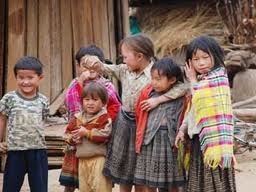Poverty reduction on the back foot
 Thanh Thi Thach, a 41-year-old farmer in southern Tra Vinh province, remembered how her family used to annually harvest only one crop. The lack of water for irrigation and electricity prevented them from growing more crops.
Thanh Thi Thach, a 41-year-old farmer in southern Tra Vinh province, remembered how her family used to annually harvest only one crop. The lack of water for irrigation and electricity prevented them from growing more crops.
“Life was very hard back then,” Thach said. “Now the productivity has been raised, thanks to new varieties and state-funded canals, which enable us to annually grow two or three crops of rice.”
Thach is among an estimated 30 million Vietnamese people who have been lifted out of poverty in the past 20 years. Her case is a typical example reflected in the World Bank’s “Well Begun, Not Yet Done: Vietnam’s Remarkable Progress on Poverty Reduction and the Emerging Challenges” report released last week in Hanoi.
Under the report using the World Bank’s new poverty line of $2.25 per person per day, the poverty headcount in Vietnam fell from nearly 60 to 20.7 per cent over the past 20 years. Additionally, the country has also made remarkable progress in education. Primary and secondary enrollments for the poor have reached over 90 and 70 per cent, respectively.
Thach has never been to school, but hoped her grandchildren would finish high school and get better jobs with sustainable incomes. “More knowledge, higher pay,” she said.
Rising levels of education and diversification into off-farm activities, such as working in construction sites, factories or domestic housework have also contributed to reducing poverty in Vietnam, according to the World Bank.
“These achievements are very impressive,” said Valerie Kozel, a World Bank senior economist and the report’s lead author. “But growth has slowed in recent years due to macro instability and external shocks. Ethnic minority poverty remains persistently high. The remaining poor are facing difficult challenges like isolation, limited assets, low levels of education and poor health conditions.”
Vietnam’s economy grew 5.03 per cent last year, representing the slowest growth performance since 1999, while the economy of the US, Europe and Japan, which are Vietnam’s major export markets, remains unstable now, which can hurt the Vietnamese economy.
Meanwhile, though Vietnam’s 53 ethnic minority groups occupied nearly 15 per cent of the country’s population, they represented nearly 50 per cent of the poor in 2010. Most minorities currently inhabit isolated and less productive upland regions of Vietnam.
In another case, 49.3 million people moved into the “middle class” between 1990 and 2008. However, the majority of such class is living on just $2 to $4 per capita a day, making them vulnerable to falling back into poverty, according to the Asian Development Bank.
“In the coming years, poverty reduction in Vietnam will be more challenging, necessitating more efforts from the government, the society, and the poor themselves,” said Nguyen Thi Huong Lan, director general of the Institute of Labour, Science and Social Affairs under the Ministry of Labour, Invalids and Social Affairs.
“Vietnam needs to move forward in some important areas,” said Kozel. “Growth has been the main driver of poverty reduction and Vietnam needs to take measures to promote macroeconomic stability, reduce inflation, and ensure growth is sustainable in the future.”
What the stars mean:
★ Poor ★ ★ Promising ★★★ Good ★★★★ Very good ★★★★★ Exceptional
 Tag:
Tag:
Related Contents
Latest News
More News
- Global partnerships key to Vietnam’s IFC development (December 26, 2025 | 16:18)
- Vingroup pulls out of bid to invest in North-South high-speed railway (December 26, 2025 | 11:42)
- Strengthening supply chains through trade promotions and customs reform (December 24, 2025 | 14:00)
- PM orders investment model for North–South high-speed rail (December 22, 2025 | 17:43)
- LS Eco Energy to invest in Vietnam rare earth sector (December 22, 2025 | 17:31)
- Government moves to establish International Financial Centre (December 21, 2025 | 21:00)
- Vietnam's IFC to target global investment flows (December 21, 2025 | 18:00)
- Two national hospitals expand capacity with new facilities (December 20, 2025 | 09:00)
- Ha Tinh breaks ground on major Vingroup industrial and energy projects (December 19, 2025 | 18:24)
- EVN launches major power infrastructure projects nationwide (December 19, 2025 | 18:17)























 Mobile Version
Mobile Version